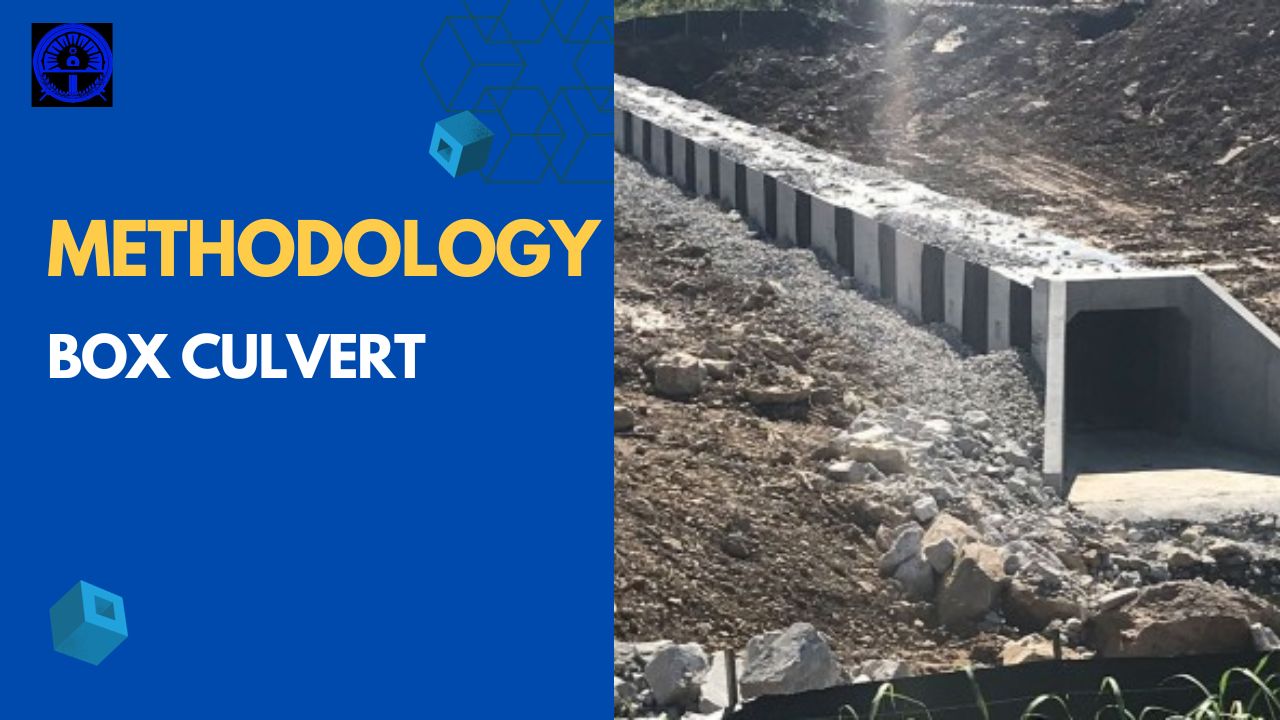This item of work deals with construction of Box culverts with approved materials as per the terms of contract agreement.
General
The construction shall confirm to the specific alignment, lines and grades given in the drawing. The materials used shall adhere to the section 1000 of technical specifications. The concrete used shall be of approved design mix and shall confirm to section 1700 of MORT&H specifications.
Procedure
Diversion of Water:
The requisite and efficient methods are adapted to suit the particular need of diverting the water
Excavation OF BOX CULVERT:
Layout marking will be done as per approved working drawing and ground
levels will be taken and recorded jointly
Excavation will be done conforming to the lines, grades, slopes and levels as shown on the approved working drawings, as per the specification.
If required dewatering will be done as per the specification.
All the excavated materials will be disposed such that the working space will not effect, as per the specification.
Excavation in Hard Rock will be done as per specification.
Preparation of foundation will be done as per specification.
If there is any slips & slip outs in the excavation will be removed
Filling below foundations up to require level and backfilling will be done with approved material in layers not exceeding 150mm compacted thickness. The compaction will be done with the help of suitable equipment such as mechanical tamper, plate vibrator etc. after necessary watering as per specification.
Concreting OF BOX CULVERT:
Base Slab:
The reinforcement shall be placed in position and shuttering is erected to exact dimensions of base slab and after due checks, base slab is concreted to the top of bottom chamfer and joints is maintained as detailed in drawing.
Walls :
The walls are cast to bottom level of upper chamber. The procedure adopted will be same as base slab.
Top slab:
The shuttering is made to support the top slab and necessary care is taken to seal the joints to avoid slurry loss from concrete through joints. The steel is positioned and concreted. The formwork is removed after due time as per norms and blemishes, if found, are made good. The inlet & Outlet structures, the aprons and floor protection works are constructed in similar progression. The surroundings are cleared of all surplus stocks, waste materials etc., and cleaned. The structure is finished as per specifications including necessary markings, paints etc., and completed.
Equipment/Machinery use for box culvet:
Proclain/JCB
Auto level with accessories
Transit Mixers
Needle Vibrators
Cube Moulds
Box culvert design / DRAWINGS

Box Culvert Working Drawing And Bar Bending Schedule
FAQS:
Frequently asked questions (FAQs) about box culverts:
What is a box culvert?
A box culvert is a structure designed to allow water to flow under a roadway, railroad, or other obstruction. It is typically rectangular or square in shape and consists of two horizontal slabs (the top and bottom) and vertical side walls.
Where are box culverts commonly used?
Box culverts are commonly used in various infrastructure projects, including roadways, bridges, and stormwater drainage systems. They provide a passage for water while supporting the weight of the traffic or other loads above.
What materials are used to construct box culverts?
Box culverts can be made from various materials, including concrete, steel, and sometimes composite materials. Concrete box culverts are the most common due to their durability and strength.
How are box culverts different from other types of culverts?
Box culverts differ from other culvert types, such as pipe or arch culverts, in their shape. While pipes are round and arch culverts are typically semi-circular, box culverts have a rectangular or square cross-section.
What are the advantages of using box culverts?
Box culverts offer several advantages, including high load-carrying capacity, ease of construction, and the ability to accommodate a wide range of flow conditions. They are also durable and require minimal maintenance.
How are box culverts installed?
Box culverts are usually precast offsite or cast-in-place on-site. Installation involves excavating a trench, placing the culvert in position, and then backfilling the area around it.
Are box culverts only used for water drainage?
While box culverts are commonly used for water drainage, they can also serve other purposes. They are sometimes used as underpasses for pedestrians or wildlife, allowing safe passage beneath roads or railways.
What is the lifespan of a box culvert?
The lifespan of a box culvert depends on factors such as the materials used, environmental conditions, and the level of maintenance. Generally, well-designed and properly maintained box culverts can last for several decades.
Can box culverts be customized for specific projects?
Yes, box culverts can be customized to meet the specific requirements of a project. Engineers can design them to accommodate different sizes, loadings, and flow conditions.
Are there design standards for box culverts?
Yes, engineering standards and codes, such as those provided by the American Association of State Highway and Transportation Officials (AASHTO) or the European Committee for Standardization (CEN), provide guidelines for the design and construction of box culverts.
These FAQs provide a general overview of box culverts, but specific details may vary based on regional standards and project requirements.

